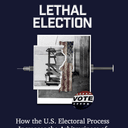On October 29, a New York Times editorial raised many concerns regarding the recent execution of Native American Jeffrey Landrigan in Arizona. The Times said “the system failed him at almost every level, most disturbingly at the Supreme Court.” Landrigan’s execution garnered national attention because a nationwide shortage of sodium thiopental forced the state to seek the drug from foreign suppliers. Despite repeated orders from a federal District Court judge, Arizona refused to divulge the source of their lethal drug supply. The judge stayed the execution based on these concerns, but the stay was overturned by the U.S. Supreme Court in a 5 – 4 ruling that said there was “no evidence in the record to suggest that the drug obtained from a foreign source is unsafe.” But, as the editorial pointed out, “There was no evidence — either way — because Arizona defied orders to provide it.” In addition to concerns about the drugs used in Landrigan’s execution, recent statements made by Landrigan’s sentencing judge questioned the appropriateness of a death sentence in this case. Judge Cheryl Hendrix, who presided over Landrigan’s trial, recently told the Arizona Board of Executive Clemency that she would not have sentenced Landrigan to death if his trial attorney presented evidence of the defendant’s brain damage and other problems. The Board’s vote was 2 – 2, so clemency was denied. Read full editorial below.
October 28, 2010
No Justification
Two years ago, when a splintered Supreme Court approved lethal injection as a means of execution in Baze v. Rees, Justice John Paul Stevens made a prophecy. Instead of ending the controversy, he said, the ruling would raise questions “about the justification for the death penalty itself.” Since then, evidence has continued to mount, showing the huge injustice of the death penalty — and the particular barbarism of this form of execution.
In the case of Jeffrey Landrigan, convicted of murder and executed by Arizona on Tuesday, the system failed him at almost every level, most disturbingly at the Supreme Court. In a 5‑to‑4 vote, the court’s conservative majority allowed the execution to proceed based on a stark misrepresentation.
Of the 35 states that allow the death penalty, all now execute by lethal injection. Most use a sequence of drugs that is supposed to provide a painless death, but when it is administered incorrectly it causes agony that amounts to torture. Veterinarians say the method doesn’t meet the standard for euthanizing animals.
Arizona’s plan for Mr. Landrigan’s execution was thrown off by a shortage of sodium thiopental, one of three drugs used in standard lethal injections. The only maker approved by the Food and Drug Administration hasn’t been able to get a critical ingredient for almost a year. The state obtained the drug from a foreign maker.
When Mr. Landrigan tried to ascertain its effectiveness for sedating him so he wouldn’t feel the pain of the other drugs, Arizona refused to divulge the information. After the state defied four orders from a federal district judge to produce it, the judge stayed the execution.
When the case got to the Supreme Court, the majority overturned the stay, saying there was “no evidence in the record to suggest that the drug obtained from a foreign source is unsafe.” There was no evidence — either way — because Arizona defied orders to provide it.
The court’s whitewash highlights the arbitrariness of Mr. Landrigan’s execution. Cheryl Hendrix, the retired Arizona judge who presided over his trial, recently said, “Mr. Landrigan would not have been sentenced to death” if she had been given the medical evidence of the defendant’s brain damage and other factors. Mr. Landrigan’s inept trial lawyer didn’t submit the evidence.
She no longer had the power to alter his fate, but, in an affidavit for the Arizona Board of Executive Clemency, Ms. Hendrix supported his plea to have his death sentence commuted to life. “Since the courts have not corrected this injustice,” she stated, “I am compelled to submit this declaration on Mr. Landrigan’s behalf.” The Supreme Court should have upheld the stay of execution and forced the state to deliver the information called for. It failed, shamefully.
(“No Justification,” New York Times, October 29, 2010). See Arbitrariness, Lethal Injection and U.S. Supreme Court.



